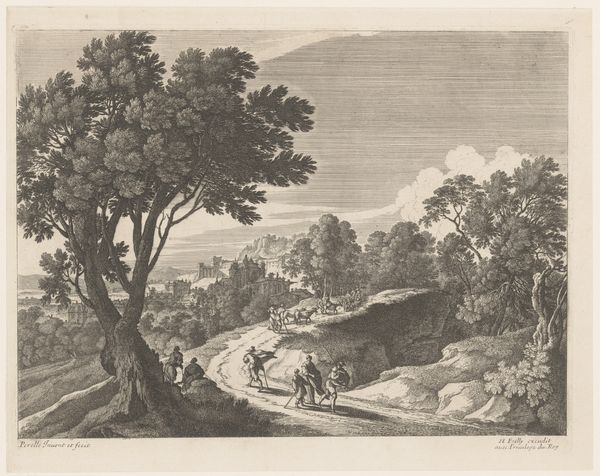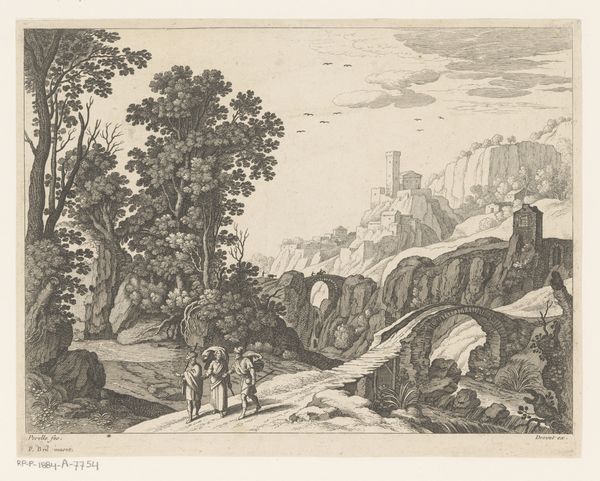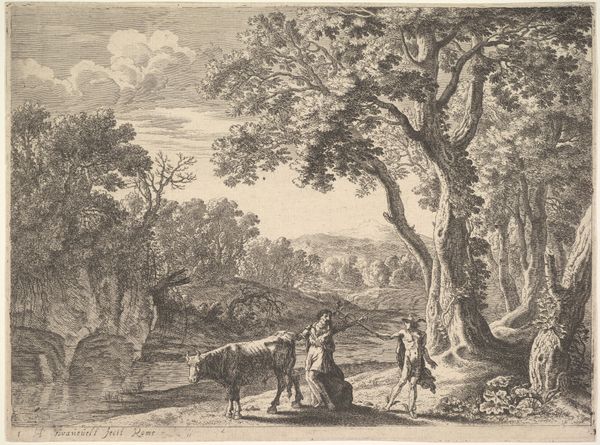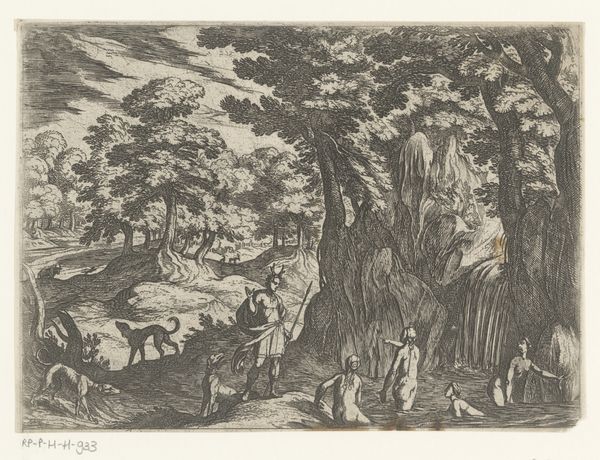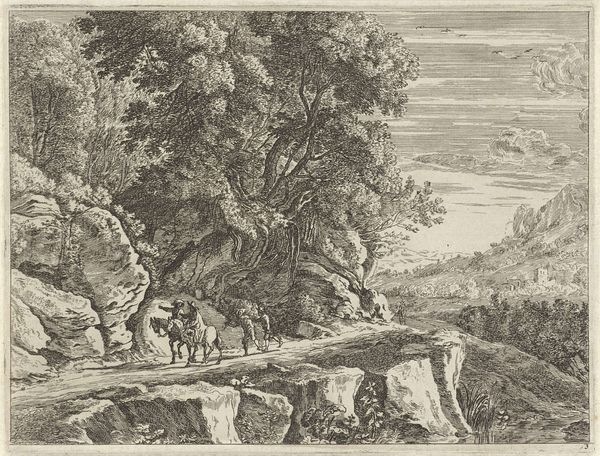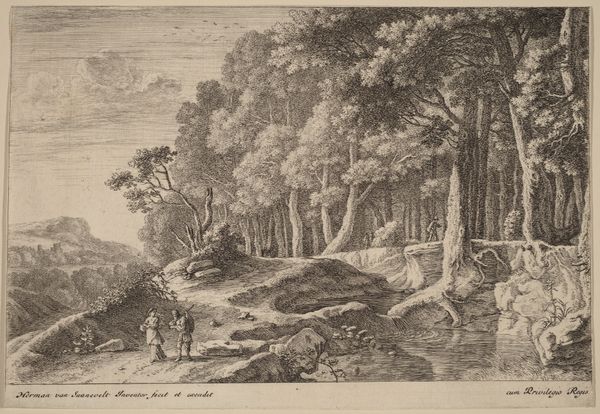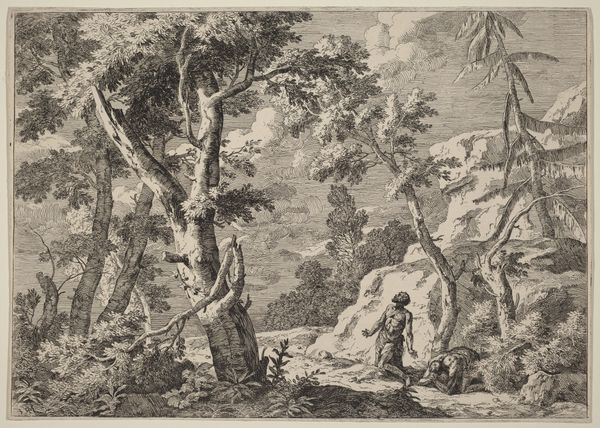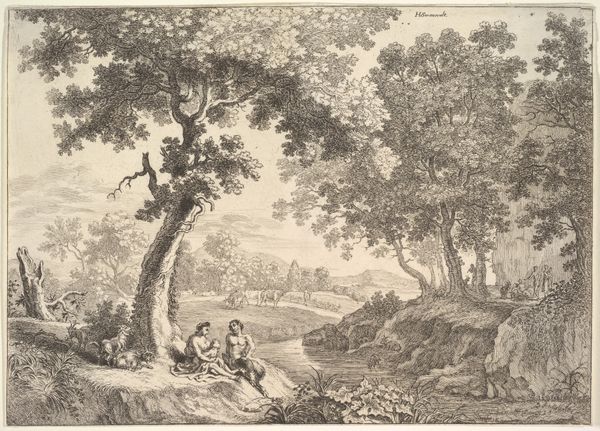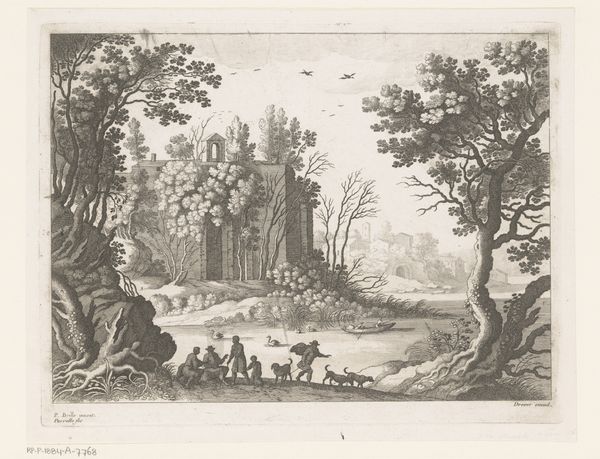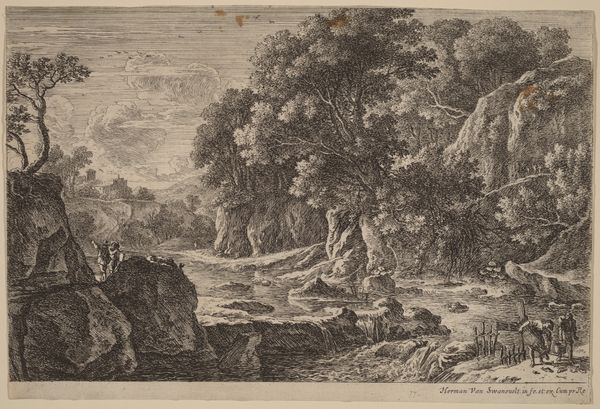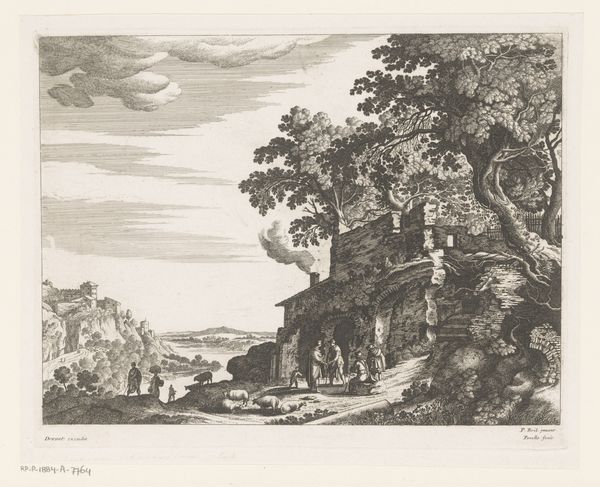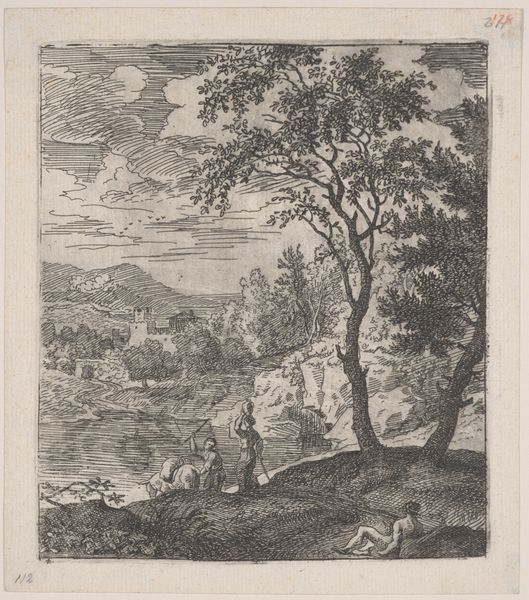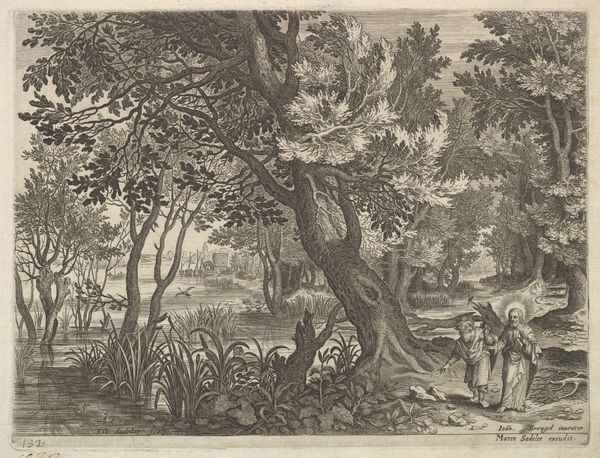
Landscape with Tobias and the Angel and Gypsies 1568 - 1629
0:00
0:00
drawing, print, engraving
#
drawing
#
narrative-art
#
baroque
# print
#
landscape
#
figuration
#
pencil drawing
#
genre-painting
#
history-painting
#
italian-renaissance
#
engraving
Dimensions: Sheet: 8 11/16 x 12 1/16 in. (22 x 30.7 cm)
Copyright: Public Domain
Editor: This is Aegidius Sadeler II's "Landscape with Tobias and the Angel and Gypsies," created sometime between 1568 and 1629. It's an engraving, and I'm struck by how the artist has created so much depth and detail using only lines. What stands out to you about the composition of this work? Curator: Note how the spatial composition, in a structural sense, manifests itself through distinct layering. Observe the foreground figures set against the middle-ground trees and, ultimately, against a distant architectural prospect crowned with cloud-laden mountains. Each tier is articulated through an application of line which enhances the structural legibility of this stratified form. How does that structuring impact your reading? Editor: It feels almost theatrical, like a stage set. The foreground is clearly defined, and it leads your eye back into the scene, which almost feels compressed. But there’s also so much happening; where do you think the artist wants us to focus? Curator: The dynamism resides precisely in that tension. While narrativity has its importance, Sadeler invites us to consider how such elements articulate the visual structure, rather than the reverse. We may well ponder whether those very narrative segments merely function to uphold the artist’s structural syntax. Editor: So, instead of focusing on *what* is being depicted, we should be more interested in *how* it's being depicted? The lines, the contrasts... Curator: Precisely. Consider the texture achieved purely through linear variation – observe the density within the foliage and contrast that with the more open strokes suggesting the distant sky. This textural and tonal arrangement serves as more than mere decoration; they act as fundamental structural supports. How might those textures be functioning symbolically within this constructivist agenda? Editor: I hadn't really thought about the textures having that structural role. It seems so obvious now, focusing on those patterns... thanks! Curator: Yes, the visual architecture that Sadeler creates, through these manipulations of line and tone, directs and perhaps even defines our aesthetic experience of the work.
Comments
No comments
Be the first to comment and join the conversation on the ultimate creative platform.
